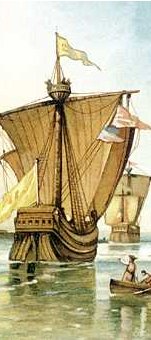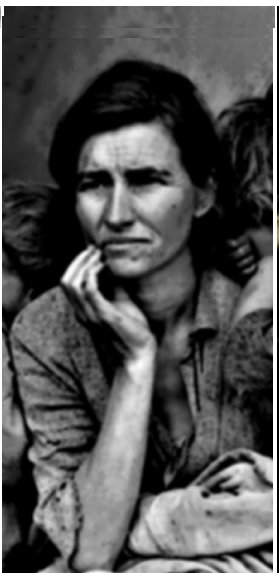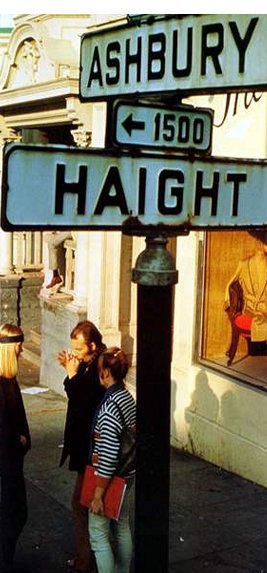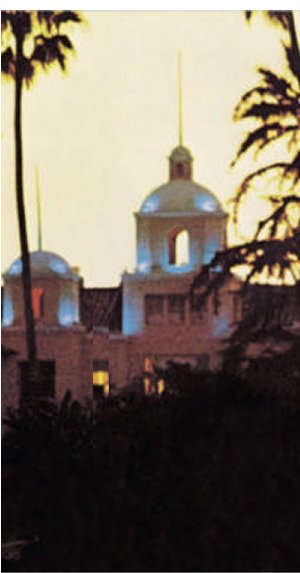The Doge of Los Angeles Jennifer Kim
Margaret Leslie
Davis is a graduate of Georgetown University. Davis is also a California lawyer and author. She has also written Dark Side of Fortune:
Triumph and Scandal in the Life of Oil Tycoon Edward L. Doheny and Rivers in the Desert: William Mulholland and the
Inventing of Los Angeles for
which she won the Golden Spur Award for Best Non-Fiction Book by the Western
Writers of America. She currently resides in Los Angeles, California.
Dubbed as the ¡§Doge of Los
Angeles¡¨ by one historian, Franklin D. Murphy played a powerful role at the
heart of virtually every new cultural institution in the city. 1
Margaret Leslie Davis delivers the compelling story of how Murphy influenced
academia, the media, and cultural foundations to reshape a ¡§cultural backwater
to a vibrant center for the arts.¡¨2 For approximately three decades,
Murphy helped shape the city of Los Angeles into a world-class
metropolis using his relationships with founders of some of America¡¦s greatest fortunes. By
channeling more than one billion dollars into the city¡¦s arts and educational
foundation, Murphy advanced Los Angeles into a brilliant
world-classed city ready for its role in the new period of global trade and
cross-cultural arts.
Born
on January 29, 1916 in Kansas City, Missouri, into a family that valued
rational thought, young Franklin Murphy was energetic and adventurous. He grew
up reading his ¡§way to exploits¡¨ with the novels of Sir Walter Scott and the Tom
Swift series for boys, hardly imagining that as an adult he would
¡§encounter a social and intellectual revolution.¡¨3 Murphy first
attended Kansas University, and then he was accepted
into the University of Pennsylvania, School of Medicine, his father¡¦s alma mater.
However, Franklin delayed this entry for a
year to attend the University of Göttingen in Germany where his father also had
studied. He chose to delay his admittance into University of Pennsylvania because he wanted to follow
his father¡¦s footsteps ¡V allowing ¡§two Franklin Murphys to have worked in the
same laboratories of the same German university.¡¨4 After he
graduated from the University of Pennsylvania, Murphy was promised a
teaching position at its medical school, but returned instead to the medical
school at the University of Kansas in hopes of improving the
institution. Murphy was then asked by the regents of the University of Kansas to accept the
chancellorship. After accepting and serving as chancellor at the University of Kansas, Murphy was given the
opportunity to be the chancellor at the University of California in Los Angeles. Before arriving in Los
Angeles, Franklin Murphy had read about the idiosyncrasies of the city and its
reputation as a ¡§cultural wasteland,¡¨ but to his surprise, he found
the city curiously exciting.5 Franklin Murphy was welcomed into the
circle of three strong-willed Los Angeles regents: Edward W. Carter, a
¡§charismatic and powerful retail-chain tycoon¡¨; Edwin Wendell Pauley, a
¡§steadfastly conservative oil millionaire¡¨; and Dorothy Buffum Chandler, an
¡§obsessive doyenne, a driving force in the family that owned the Times Mirror
company and the Los Angeles Times.¡¨6 In November of 1961,
Edward Carter nominated Murphy to be the chairman of the county art museum¡¦s
building fund campaign. His new role gained him recognition in the community.
To Murphy, the art museum was another symbol of ¡§coming cultural matur[ation]¡¨
of Los Angeles.7 The Los Angeles County Museum of Art then
opened in the spring of 1965, following the opening of another arts
institution, the Los Angeles Music Center on December 6, 1964. Not long after the opening of the two institutions,
Ronald Reagan announced his candidacy for governor of California on January 4, 1966. However, Reagan¡¦s campaign rhetoric was deeply
disturbing to Murphy. For two years Murphy underwent severe funding cuts
ordered by the governor. Then, on February 17,
1968,
Murphy officially resigned from his position of chancellor and took the
position of chief executive officer at Times Mirror.
Franklin
Murphy arrived in September 1968 to take up his duties at Times Mirror. The
fact that a chancellor was selected to serve as a chairman and chief executive
stunned many company officials. Furthermore, Murphy had never run a business,
nor did he have experience managing a corporate enterprise of such size. Murphy
underwent a transformation as he eased into a powerful role¡Xthe former
university chancellor operated at the same level of power and prestige as many
major businessmen who previously had been targets of his fund-raising. His
world rapidly expanded as he was asked to join numerous civic organizations and
corporate boards. Increasingly, leading figures in business, government,
entertainment media, and the arts sought chances to become better acquainted
with the new chairman. The Times Mirror Company gradually became a
¡§communications force responsible for leadership¡¨ as reporters
working under Times covered and wrote articles pertaining to the intense
1968 presidential campaign.8 Subsequently in 1976, Times Mirror
achieved its best year and stood on the threshold of becoming a billion-dollar
enterprise. In spite of this, Times Mirror did falter when it, along with other
publishing enterprises, tried to purchase urban newspapers, chains, and
independents in order to increase profits and promote growth. Although Times
Mirror lost several choice properties, industry observers ranked it the
country¡¦s ¡§most profitable publicly held publishing company.¡¨9
In
1970, the Los Angeles County Museum of Art board persuaded Murphy to accept the
difficult role of museum president. Murphy was most concerned that the museum
was an ¡§art museum without art.¡¨10 Franklin Murphy had a solution in
mind¡Xto obtain the prized Norton Simon Collection, which had a market value of
150 million dollars. Ownership of Simon¡¦s collection, he believed, would be a
magnet for future donations. However, Norton Simon demanded that Murphy meet
his requirements before negotiations began about his collection. The board and
the museum staff hurried to meet Simon¡¦s demands, but he was never satisfied.
In spring of 1971, Simon stunned museum trustees with the announcement that he
planned to sell more than seventy paintings and sculptures at an auction¡Xmost
of which were already on loan to the museum. Murphy recognized that hope of
obtaining Norton Simon¡¦s collection was dwindling. In 1971, Armand Hammer, an
oil tycoon, boldly announced his plan to donate more than ten million dollars
worth in paintings, including a world-famous Van Gogh piece to the Los Angeles County Museum. As his term as museum
president was coming to a close, Murphy focused his energies on the museum¡¦s
future. However, the museum suffered a ten percent cut in funds from the county
after the passage of Proposition 13 in 1978¡Xa ¡§$284,000 loss to the annual
operating budget.¡¨11 Moreover, by 1985, Franklin Murphy had served
for twenty-one years as a trustee of the National Gallery, a renowned
institution founded by Andrew Mellon. As a chairman of the National Gallery,
Murphy¡¦s best asset was its director, J. Carter Brown, who brought new
enthusiasm and a fresh approach to his duties as director. Brown, like Murphy,
was dedicated in making art accessible to a wide audience. When selecting works
for exhibitions he arranged, referred to as blockbusters, Brown was
far-ranging, in that he felt no need to confine the National Gallery¡¦s space
with only old masters and familiar American works. In addition, Murphy thought
of the National Gallery as ¡§America¡¦s finest example of the mix of public and
private resources,¡¨ a partnership between the federal government and the
American people.12 Murphy¡¦s reputation for clear thinking when in
chaos was repeatedly tested in his performance on the various restless boards
on which he served. Murphy¡¦s negotiations with Armand Hammer and Norton Simon
took much of his prime years of his life, but he was left without the prizes he
sought after. Despite the failure, Murphy was recognized as a prodigy in a
world of trusteeship.
Franklin Murphy, Ed Carter,
and Dorothy Chandler had formed an effective team as culture builders. The ¡§old
guard¡¨ was being replaced by forceful corporate leaders whose fortunes were not
from traditional sources like oil or land sales, but from financial services,
entertainment, technology, and global trade.13 Murphy¡¦s authority in
Los Angeles was still extensive, and though his influence rarely came to the
attention of the general public, it was well known in corporate and academic
circles. Murphy continued to make a notable difference in Los Angeles through the sponsorship of
the Ahmanson Foundation, in which he was a trustee. The Ahmanson Foundation was
found by Howard Ahmanson, a key figure in the power structure of Los Angeles. The foundation
administered funds for the ¡§public welfare and for no other purpose.¡¨14
Murphy wanted each dollar of the millions that were donated to the community to
serve as a way to activate constructive energies. When the foundation was in
jeopardy with conflicting reports about the foundation¡¦s assets, Murphy
protected the enormous financial assets of the foundation, and also guided the
institution to a sense of purpose and humanistic goals. By guiding the
overwhelmed institution through its most unstable time Murphy¡¦s greatest gift
to Los Angeles gave was his stewardship of
the Ahmanson Foundation. By the
1990s, the foundation was contributing nearly 20 million dollars each year in
local grants. Murphy took pleasure in the times he arrived on the scene to save
an endangered city institution. One such rescue came when KCET, the city¡¦s only
public television station, could not meet its monthly payroll and was forced to
put its Hollywood studio up for sale. Vital Ahmanson Foundation support
allowed for the station to continue for many years. Franklin Murphy, then,
reached the mandatory age of retirement, seventy-five, in 1991. He had mastered
the art of trusteeship during an exceptional period in Los Angeles when enthusiasm for
cultural development allowed him to apply his managerial and scholarly talents.
Perhaps the most emotional event for Murphy¡Xthe ¡§realization of twenty-nine
years of promise and planning¡¨¡Xwas the long-awaited opening of the UCLA Fowler
Museum of Cultural History.15 As a chancellor in the 1960s, when
sensitivity to world cultures was drawing the attention of scholars and
activist students, Murphy envisioned the launch of the museum to fill an
obvious gap in the study of cultural history in non-Western traditions. Then in
the fall of 1993, Murphy was diagnosed with acute cancer of the mouth and jaw.
Even with his health deteriorating, Murphy continued to take pleasure in
dispensing grants as a trustee of the Ahmanson Foundation. Soon, his cancer
spread to his lungs and Murphy died in his hospital bed at the UCLA Medical Center on June 16, 1994. His legacy and memory continues in the institutions
he fostered. His desire to see cultural centers as a ¡§home for the humanities¡¨
merged with his belief that building steadily on cultural awareness was part of
the ¡§path to civic harmony.¡¨16
Through
her book, Margaret L. Davis introduces a man who is hardly known, but has
helped develop one of the largest cities and counties today. Davis praises Franklin Murphy for
his contributions to the city of Los Angeles and his enormous managerial
ability to advance Los Angeles into a cultural and
artistic crossroads. Davis believes Murphy was a man who has done more to
¡§shape the cosmopolitan cultural image¡¨ of Los Angeles than any other person of
his generation.17 However, Davis¡¦s focus is not only Murphy, but
also on the growth of Los Angeles as a cultural center with Murphy playing an
integral part in transforming the city into a modern metropolis. From a
¡§cultural backwater¡¨ to a ¡§vibrant center¡¨ for the arts, Murphy transformed the
city by opening two of California¡¦s largest and most well-known
museums ¡V the Los Angeles Museum of Art and the National Gallery, and
developing the University of California system. Murphy¡¦s array of
positions and roles allowed him to influence the worlds of not only artistic
institutions, but extend also to academia and journalism.
Davis seems to forgive Murphy for
many of his faults, such as his bad temper, which he often took out on his
employees. It also seems she glosses over his extra-marital affairs, giving few
hints of the passion or angst of Murphy¡¦s personal life. The ease with which
she dismisses them leaves the reader wondering what other parts of Murphy¡¦s
life may also be omitted. Also, Davis¡¦s work suffers from her ¡§inattention to
the other type of culture inherent to Los Angeles¡¨, for instance, the film
industry; instead, Davis keeps her focus on fine arts, good books, and
classical music.18 Davis explains the dealings of the urban elite as
they negotiated the world of high art, but ignores the film industry which also
shaped the metropolis. Margaret L. Davis also views Franklin Murphy detachedly,
telling of his intellectual skill with subtle separation from his wealthy
contemporaries. Davis writes in the tone similar
to diplomatic historiography because she sounds like a realist¡Xdiscussing a
person who cultivated a city into its vibrant self today.
In
Emily E. Straus¡¦s review of Margaret L. Davis¡¦s book, Straus deems that Davis¡¦s book will be of interest
to urban historians, especially those who ¡§study how decisions are made in
cities¡¨ and how ¡§individuals can help shape these decisions.¡¨19
Straus states that Davis not only tells the history of Murphy, but also offers
insight into the histories of such disparate subjects such as Dorothy Chandler,
the Ford Motor Company, the Nixon presidency, and UCLA. By doing so, she shows
the interconnectedness of the media, the arts, politics, business, and
academia, while illustrating how personal relationships and connections play
central roles in the workings. Straus also mentions that by
understanding the bonds made through the personal relationships one will fully
understand Murphy¡¦s position of being a culture broker, a middleman emphasizing
commercial aspects and facilitating the crossing of one group from one culture
into another.
In another review, Jim Newton,
an editor from the Los Angeles Times, states that Davis¡¦s examination of Los Angeles through the lives of its
civic and cultural leaders is a ¡§significant, if imperfect, contribution.¡¨20
Newton believes Davis¡¦s work supplies the
residents of Los Angeles with an understanding of
themselves and simultaneously, delivers subtle messages for today¡¦s leaders. To
Newton, not only is the Culture Broker a book about the formation of Los
Angeles, but also a jolting reminder of how much the city¡¦s cultural and
corporate leadership has changed from the days of Murphy¡¦s dominance. Newton believes Margaret L.
Davis¡¦s book is useful not only in presenting how Murphy led Los Angeles, but also in introducing a
standard for today¡¦s leaders to meet.
Davis provides deep insight into
the transformation of Los Angeles and the lives of the people
who had major influences on the development of the city into a cultural focal
point. To have gone through ¡§extensive research, papers, numerous oral history
interviews¡¨, Davis surely conquered a ¡§large task.¡¨21 Davis presents a book about a man
who dedicated more than half his life into advancing the city of Los Angeles. Through him, the University of California system has been influenced
so that, for example, UCLA and UC Berkeley are on par financially. By reading
her book, readers will be able to appreciate the works of Franklin Murphy and
be able to understand how long and how much effort it takes for a city to
mature.
But
today, Franklin Murphy is still a not well known person. However, Franklin
Murphy deserves to be recognized by all throughout California for his undying
determination and dedication of evolving Los Angeles¡¦s cultural and artistic
scene; also for guiding Los Angeles through an ¡§era of radical change that
rejected the creed of the modern.¡¨22 With the help of others, Murphy
was able to bring vibrancy to a city that was once dull and superficial. By
introducing the appreciation of art, culture, and music by ways of museums and
music halls, the city of Los Angeles diversified in its
appreciation of the arts.
1. Kurzman, Dan. Disaster! The Great San
Francisco Earthquake and Fire of 1906. New
York: HarperCollins 1. Davis, Margaret Leslie. The
Culture Broker: Franklin D. Murphy and the transformation of Los
Angeles. Berkeley:
University of California
Press, 2007. xi.
2. Davis,
Margaret Leslie xi.
3. Davis, Margaret Leslie 1.
4. Davis, Margaret Leslie 4.
5. Davis, Margaret Leslie 25.
6. Davis, Margaret Leslie 27-28.
7. Davis, Margaret Leslie 55.
8. Davis, Margaret Leslie 130.
9. Davis, Margaret Leslie 174.
10. Davis, Margaret Leslie 210.
11. Davis, Margaret Leslie 230.
12. Davis, Margaret Leslie 244.
13. Davis, Margaret Leslie 355.
14. Davis, Margaret Leslie 112.
15. Davis, Margaret Leslie 347.
16. Davis, Margaret Leslie 389.
17. Davis, Margaret Leslie 393.
18. Straus, Emily E. Review of the Culture Broker: Franklin
D. Murphy and the Transformation of Los Angeles,
by Margaret Leslie Davis. H-Urban, H-Net Reviews Feb. 2008. 31 May 2008
<http://www.h-net.msu.edu/reviews/showrev.cgi?path=38351204047140>.
19. Straus, Emily E.
20. Newton, Jim.
"Prince of the City." Los Angeles
Times 2008. 28 May 2008
<http://articles.latimes.com/2007/09/23/features/bk-newton23>.
21. Straus, Emily E.
22. Davis, Margaret Leslie 392.





















